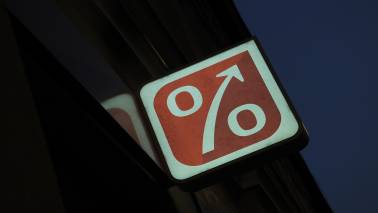Beijing and Delhi are two of the worst cities in terms of pollution, but on one hand, Beijing has a well-defined measure to battle the smog, Delhi is far from formalising one.
Delhi has been suffocating from smog — mixture of smoke and fog — for the last couple of days, reeling with increasing health hazards and accidents on the roads. Beijing is also infamous for poisonous thick grey smog which hangs over it. Not surprisingly, India and China account for half of the world’s pollution deaths. But, both capitals have starkly different methods of 'tackling' the pollution.
Delhi—the gas chamber
Even on Thursday, the pollution parameters were way above the permissible limits. Anand Vihar station of Delhi Pollution Control Committee reported PM2.5 concentration of 580 micrograms per cubic metre at 0810 hours, almost 10 times the limit.
Similarly, extreme concentrations of pollutants were reported from other stations in Delhi as well. PM2.5 concentration in central Delhi (Mandir Marg) was 636 micrograms per cubic metre and PM10 concentration was 787 micrograms per cubic metre at 0840 hours, eight times the limit of 100 micrograms per cubic metre.
The dense smog has led to three instances of vehicle pile-ups involving over 20 vehicles, on Wednesday, on the Yamuna expressway resulting in injuries to at least 22 people, UP police said. Hospitals across Delhi recorded a surge in the number of patients complaining of respiratory problems, reminiscent of the '1952 Great Smog of London'.

Dust from construction sites and smoke from cars coupled with high moisture content in Delhi have made lives difficult for Delhiites. Heavy stubble burning in Punjab and Haryana is also not helping the city. Hospitals are recording a surge in patients with respiratory problems.
The Delhi government has ordered to shut the city schools until Sunday. Construction activities and entry of heavy vehicles like trucks have been stopped in the capital. The Environment Pollution (Prevention and Control) Authority is also considering implementing the odd-even rule.
Also Read: Delhi chokes on deadly smog for second day, air quality recorded as 'hazardous' again
However, these are temporary measures which are taken after situation reaches an ‘emergency’ level. There is no permanent set of measures in place by the authorities, despite that smog in winters is now a yearly phenomenon.

Environmentalists such as EPCA member Sunita Narain cautioned against putting too much hope in temporary solutions such as the closure of schools and deplored the "lack of political will" in executing tougher decisions.
Beijing
The Chinese government has taken some concrete steps to cater to the problem of pollution. Following the 2013 event of heavy smog over one million square kilometres of Chinese territory on January 25-28, 2013, Chinese government waged a battle against it.
The country developed a network of over 1,500 air quality-monitoring stations. Comparatively, till the last count, CPCB (Central Pollution Control Board in India) made available data from 67 stations, though it has plans to create a network consisting of 683 operating stations covering 300 cities/towns in 26 states and four Union Territories of the country.
Apart from that, in Beijing, the authorities set up a ‘smog police’ to take on the violators of the regulations. The country reduced the dependency on coal-fired electricity and asked steel factories to cut down on production.
Beijing also has colour coded alerts — Blue, Yellow, Orange and Red—which trigger when the pollution level reaches a certain level.
Also Read: Delhi smog: NASA pictures show heavy stubble burning, but is it really the villain here?
The blue alert is the least severe and largely cautionary which is triggered when AQI (air quality index, a measure of air quality based on various parameters such as PM2.5 and PM10 level) reaches over 200 and is expected to affect the air for less than 24 hours. Outdoor activities such as physical education classes are required to shut down when a blue alert is announced.

The Chinese government, as a measure against pollution, asked the steel factories in and around Beijing to cut the production. Over a period of time, it has also decreased its dependency on coal-fired power plants and is developing some of the biggest solar and wind energy farms in the world. (Credit: Reuters)
The yellow alert is sounded when AQI exceeds 300 and lasts for at least 24 hours. This requires all construction which doesn't meet a certain dust control standard to be halted and heavy vehicles are barred from the city along with a ban on fireworks.
Also Read: Here's how Delhi pollution has been in the past two years after Diwali
Second level orange alert means that the AQI has already gone beyond 400. This mandates large-scale outdoor competitions and sports activities to be stopped. Outdoor barbeques are also required to shut down.
Red alert is seldom triggered and was last put in place in December 2015. It means AQI is well past 450 and the air is not suitable for any outdoor activities. Schools are shut down and vehicle rationing systems (like odd-even) is implemented.
Though it will be premature to say that Beijing has found the way to tackle pollution but it has certainly has improved the air quality over the year. PM2.5 concentration (annual) in Beijing has dropped to 85 micrograms per cubic metre against Delhi’s 122 micrograms per cubic metre, according to World Health Organisation. WHO recommends a measure of 25 micrograms cubic metre of PM2.5 (24-hour mean) in the air for a city. A measurement of PM2.5 is considered the best indicator of the level of health risks from air pollution.















